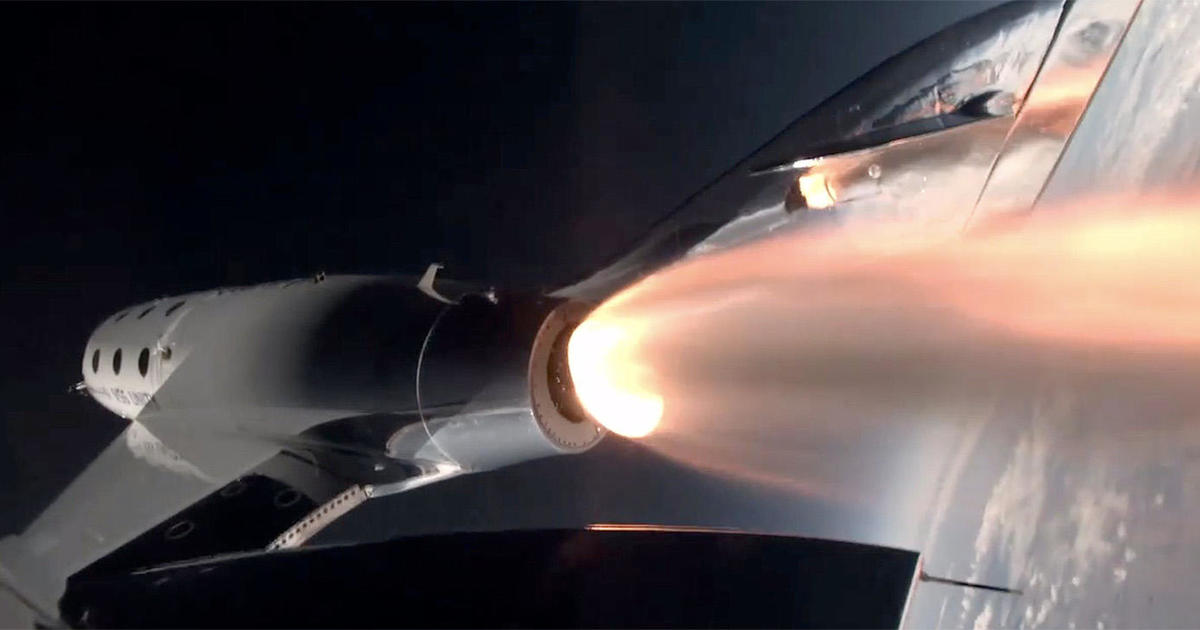Virgin Galactic’s recent feat of launching a winged rocketplane carrying a two-man crew and four passengers, including two American citizens, an Austrian, and a joint U.S.-Ukrainian citizen, to the edge of space highlights the remarkable progress in commercial space travel. The Unity spacecraft, piloted by experienced individuals, embarked on its sub-orbital spaceflight as the sixth commercial mission for Virgin Galactic, marking a significant milestone in the company’s spaceflight endeavors.
A Thrilling Journey to the Edge of Space
The journey commenced at New Mexico’s Spaceport America, with the Unity spaceplane being carried aloft by Virgin Galactic’s twin-fuselage ferry ship Eve before initiating its ascent. With the release of the spaceplane from the carrier jet and the ignition of Unity’s hybrid rocket motor, the spacecraft embarked on a supersonic near-vertical climb out of the lower atmosphere. This moment marked the commencement of an exhilarating experience for the passengers.
A Moment of Weightlessness and Spectacular Views
As the rocket motor propelled the spaceplane to nearly three times the speed of sound, the passengers and pilots experienced a surreal moment of weightlessness, a hallmark of space travel. The spacecraft ascended on a ballistic trajectory, reaching a maximum altitude of 55.2 miles, surpassing the boundary between the discernible atmosphere and space acknowledged by renowned institutions such as NASA, the Pentagon, and the Federal Aviation Administration. During this phase, the passengers had the opportunity to unstrap, float about the cabin, and immerse themselves in the awe-inspiring views of Earth from an altitude exceeding 50 miles.
The Return to Earth and Future Prospects
Following the breathtaking interlude of weightlessness, Virgin’s spacecraft, distinguished by its unique hinged wings, initiated its descent. The wings’ rotation facilitated the stabilization of the craft for re-entry, culminating in a smooth touchdown on Spaceport America’s extensive runway, concluding the 56-minute journey. Notably, this successful mission adds to Virgin Galactic’s growing legacy, having launched 55 passengers and crew on 11 sub-orbital spaceflights since its inaugural test flight in December 2018, including the visionary founder, Richard Branson.
Comparative Analysis and Future Trajectories
Virgin Galactic’s accomplishments in the realm of sub-orbital spaceflights are complemented by Blue Origin, led by Jeff Bezos, which utilizes a more traditional rocket and crew capsule for its space tourism endeavors. The fully automated spacecraft operated by Blue Origin has facilitated the launch of 32 space tourists to date, including Bezos himself, underscoring the evolving landscape of commercial space travel. As space tourism continues to capture the imagination of the public, these endeavors pave the way for future advancements in sub-orbital and orbital spaceflights, fueling the aspirations of countless individuals desiring to experience the awe-inspiring realm beyond Earth’s boundaries.
In conclusion, Virgin Galactic’s recent achievement in propelling space tourists to the edge of space and back exemplifies the convergence of pioneering technology and human curiosity, heralding a new era in commercial space travel. The seamless execution of the sub-orbital journey, inclusive of weightless interludes and panoramic vistas, underscores the potential for broader accessibility to space exploration. With each triumphant mission, the boundaries of space travel continue to expand, fostering a promising trajectory for the future of commercial space tourism.


